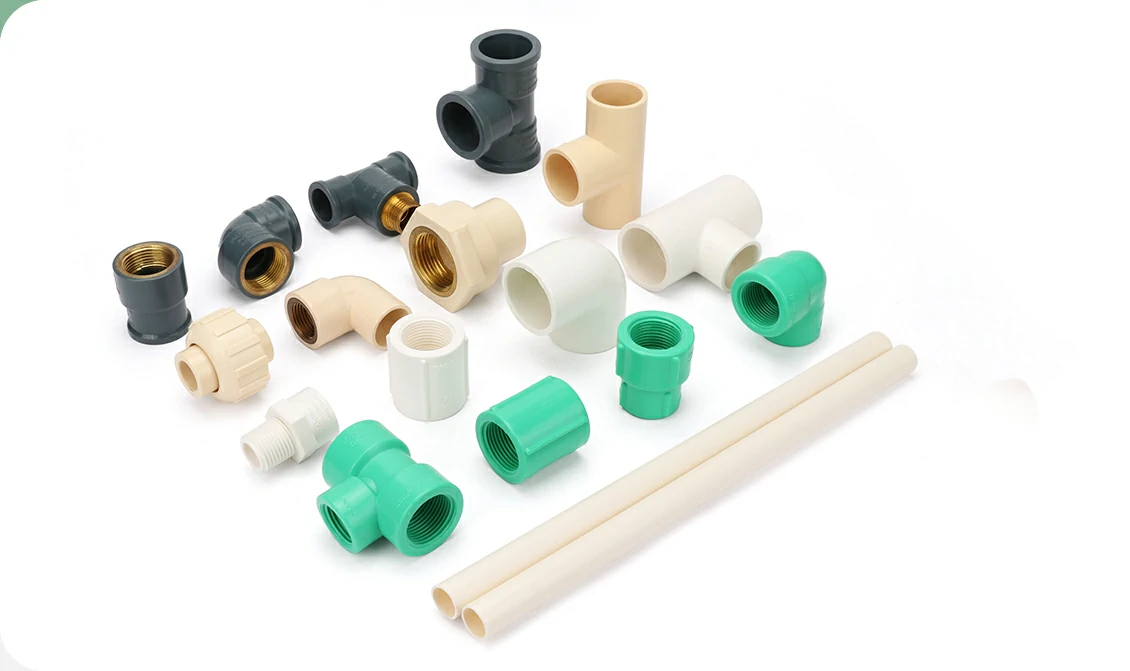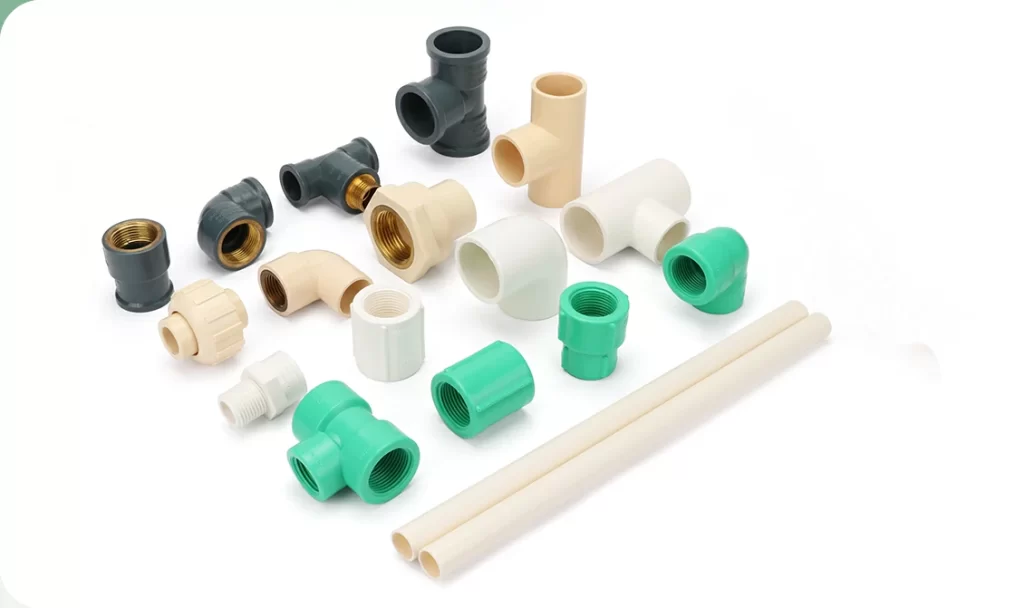Оглавление
隐藏
1. Basic Properties of PVC vs. PPR
- PVC (Polyvinyl Chloride)
- Raw Material: Byproduct of chlor-alkali industry, low cost
- Features: Chemical resistance, high hardness, non-conductive
- Temperature Range: -15℃~60℃ (cold water only)
- Typical Uses: Drainage pipes, electrical conduits, non-potable water systems
- PPR (Random Copolymer Polypropylene)
- Raw Material: Petroleum-based polypropylene, higher production cost
- Features: High-temperature resistance (≤95℃), non-toxic, flexible
- Temperature Range: -10℃~95℃ (suitable for hot/cold water)
- Typical Uses: Drinking water pipes, underfloor heating, hot water systems
2. Initial Cost: PVC is Cheaper Short-Term
| Item | PVC Pipe (DN20) | PPR Pipe (DN20) | Price Difference |
|---|---|---|---|
| Unit Price (USD/m) | $1.20-$1.70 | $2.20-$3.60 | 50%-100% higher |
| Fitting Cost (elbow) | $0.45-$0.75 | $1.20-$2.20 | 100%-200% higher |
| Transportation Cost | Low (density 1.4g/cm³) | High (density 0.9g/cm³) | PVC is 40% lighter |
- Заключение: PVC has 50%-100% lower initial cost, ideal for low-budget, non-pressure, cold-water applications
3. Long-Term Cost: PPR Offers Better Value
- Temperature Resistance
- PVC softens above 60℃, leading to leaks (30%-50% higher repair costs)
- PPR withstands 95℃, reducing replacement needs in hot water systems
- Срок службы
- PVC: 10-15 years outdoors, 20-25 years buried
- PPR: 50+ years under normal use (meets GB/T 18742 standard)
- Maintenance Cost
- PVC requires UV protection coating (annual cost $0.70-$1.40/m)
- PPR has near-zero maintenance due to anti-aging properties

4. Cost-Effectiveness by Application
- When to Choose PVC
- Indoor drainage (normal temperature, non-pressure)
- Electrical conduits (non-load-bearing, insulation needed)
- Agricultural irrigation (short-term use, low corrosion demand)
- When to Choose PPR
- Potable water supply (meets GB/T 17219 hygiene standard)
- Underfloor heating/hot water (needs ≥70℃ resistance)
- High-rise building water supply (pressure ≥1.6MPa)
5. Key Price Influencing Factors
- Raw Material Fluctuations: PVC depends on oil/chlorine, PPR on polypropylene futures
- Size Difference: PPR cost advantage narrows for large diameters (DN100+) due to thinner walls
- Brand Premium: Imported PPR is 30%-50% pricier than domestic brands, with only 10% performance difference
6. How to Choose: Balance Short-Term Cost & Long-Term Needs
- Budget-Driven: Choose PVC for projects <10 years with no high-temperature/pressure needs
- Quality-Driven: Choose PPR for drinking water, hot water, or long-term use (Recommend ifan Pipeline’s food-grade PPR pipes, WRAS certified)
- Hybrid Solution: Use PVC for drainage and PPR for water supply, connected with transition fittings
7. ifan Pipeline’s Cost-Optimized Solutions
- PPR Advantages:
- Proprietary polypropylene formula, 15% lower cost than competitors
- Large-scale production: 500 tons/day capacity, factory-direct prices for orders ≥1,000m
- Custom Services:
- PVC/PPR transition fittings (reduce hybrid system costs by 20%)
- Free pipeline system cost estimation (quote within 48 hours)
Заключение
PVC offers obvious short-term cost savings but is limited to low-temperature, non-pressure applications. PPR has higher upfront costs but delivers lower lifecycle costs in hot water, drinking water, and long-term use. Choose based on temperature, pressure, and project duration. For professional piping solutions, visit ifanultra.com for customized quotes.














Последние комментарии